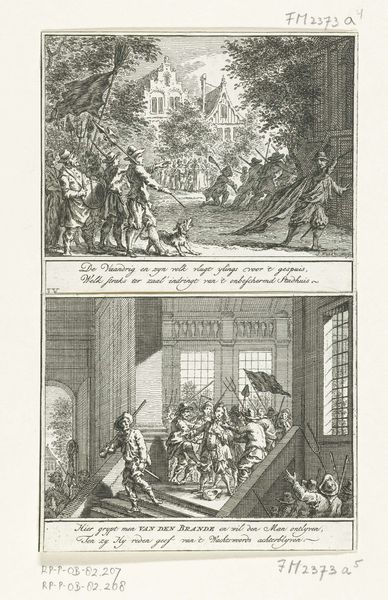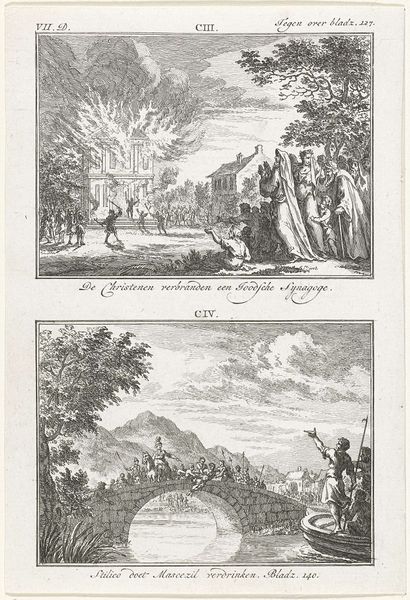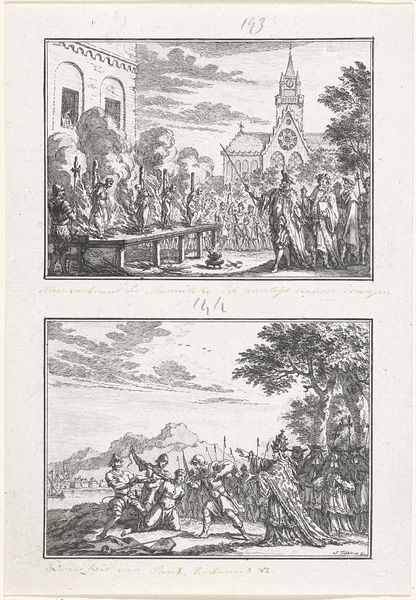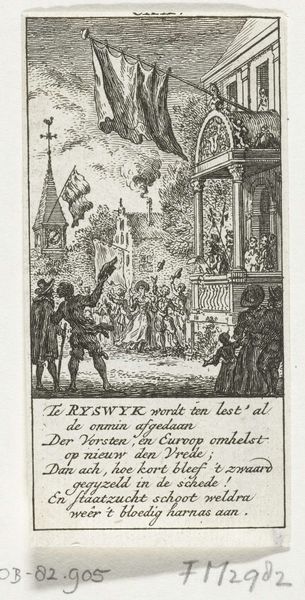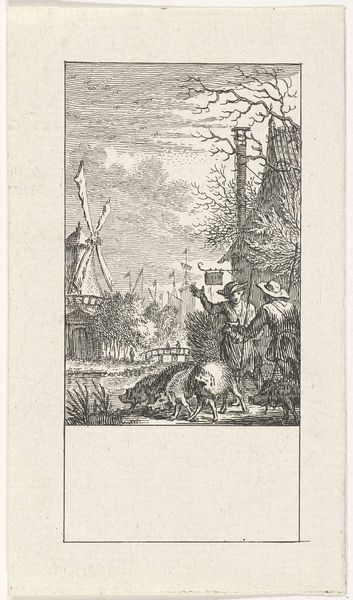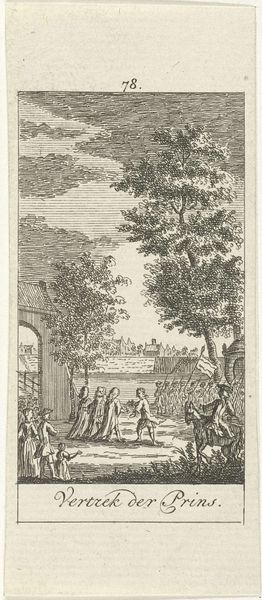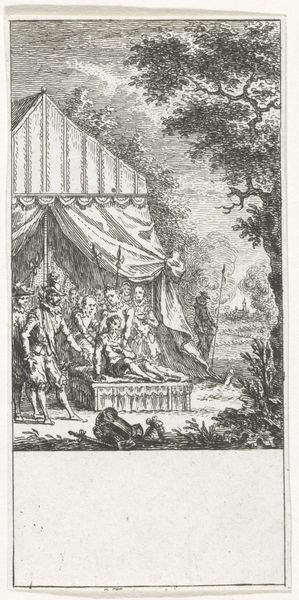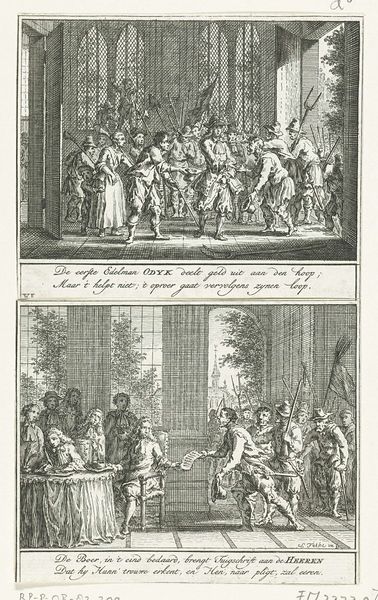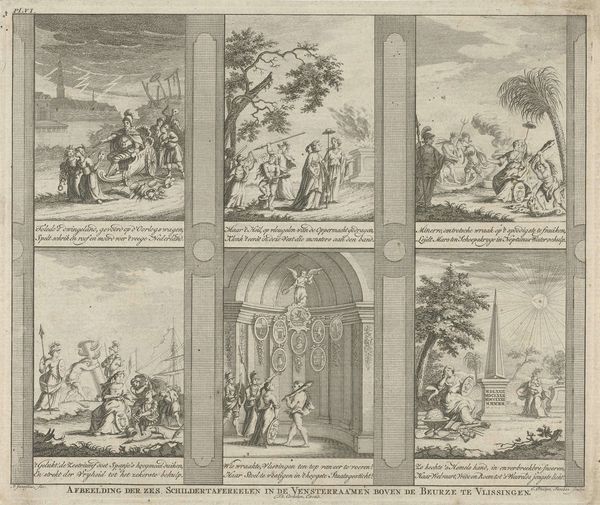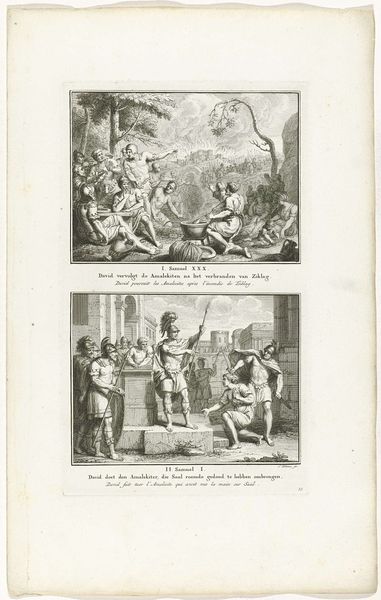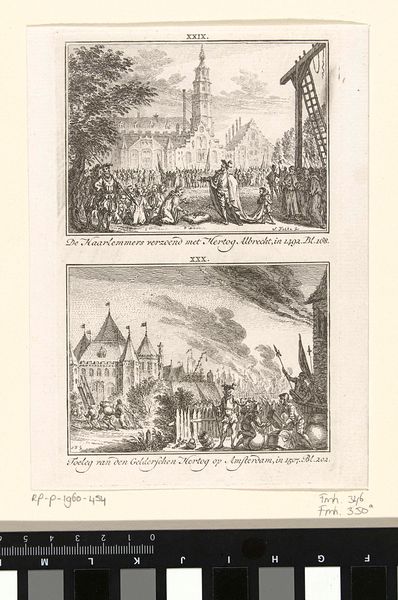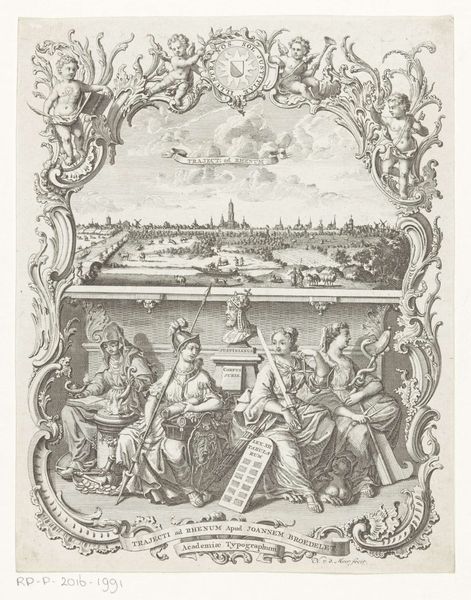
Dimensions: height 84 mm, width 104 mm
Copyright: Rijks Museum: Open Domain
Editor: So, this engraving by Simon Fokke, created between 1764 and 1766, is titled *Bestorming van de Noordpoort te Middelburg, 1672*, or *Storming of the North Gate at Middelburg*. It’s a complex scene, split into two sections, and really detailed despite its small scale. What historical narratives or social commentaries do you see playing out here? Curator: Well, it is interesting that this print was created almost a century after the depicted event. I’d say this image should be viewed as a historical representation, but also a politically charged commentary for its own time. Fokke chose a pivotal moment from the Franco-Dutch War, specifically the siege of Middelburg. The lower register displays violence and upheaval, contrasting with the seeming order in the upper one. This points towards the public's anxieties, as well as the civic responsibilities towards a protective leadership. What audience did this image serve? Editor: I imagine this print served to remind people of the conflicts of the past. Would it serve as a reminder of the cost of wars? Curator: Precisely. The artist created this scene to remind the people of their city's endurance and to think critically about warfare and public service. These sorts of prints are powerful tools of shaping public opinion during times of social turbulence, because this visual form could spread ideas quicker. Are you noticing how the scene's layout directs your reading? Editor: Yes, how the chaos on the bottom half is connected to the political figures at the top who might or might not do anything to calm that turmoil. It all reflects the concerns of the population who depend on this protection, and want to see how people respond in the midst of turmoil. Curator: That's precisely it. Prints like this demonstrate art's ability to serve not only aesthetic purposes, but to participate actively in society by prompting conversation and shaping public memory. What does this image tell us about the role of art? Editor: That art can be both a historical document and a commentary, prompting us to question the motives of historical representations, who makes them and when. Curator: Indeed. This intersection enriches the way we understand our history through art.
Comments
No comments
Be the first to comment and join the conversation on the ultimate creative platform.
